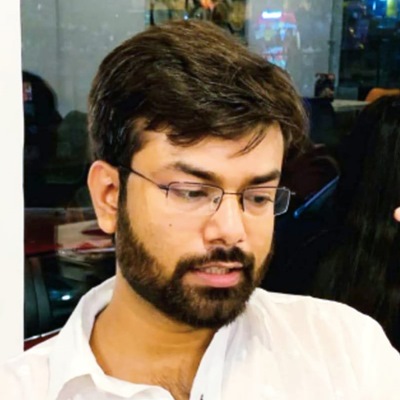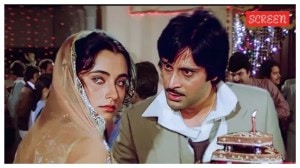Manas Srivastava leads the UPSC Essentials section of The Indian Express (digital). He majorly writes on UPSC, other competitive exams and education-related projects. In the past, Manas has represented India at the G-20 Youth Summit in Mexico. He is a former member of the Youth Council, GOI. A two-time topper/gold medallist in History (both in graduation and post-graduation) from Delhi University, he has mentored and taught UPSC aspirants for more than five years. His diverse role in The Indian Express consists of writing, editing, anchoring/ hosting, interviewing experts, and curating and simplifying news for the benefit of students. He hosts the YouTube talk show called ‘Art and Culture with Devdutt Pattanaik’ and a LIVE series on Instagram and YouTube called ‘LIVE with Manas’.His talks on ‘How to read a newspaper’ focus on newspaper reading as an essential habit for students. His articles and videos aim at finding solutions to the general queries of students and hence he believes in being students' editor, preparing them not just for any exam but helping them to become informed citizens. This is where he makes his teaching profession meet journalism. He is also the editor of UPSC Essentials' monthly magazine for the aspirants. He is a recipient of the Dip Chand Memorial Award, the Lala Ram Mohan Prize and Prof. Papiya Ghosh Memorial Prize for academic excellence. He was also awarded the University’s Post-Graduate Scholarship for pursuing M.A. in History where he chose to specialise in Ancient India due to his keen interest in Archaeology. He has also successfully completed a Certificate course on Women’s Studies by the Women’s Studies Development Centre, DU. As a part of N.S.S in the past, Manas has worked with national and international organisations and has shown keen interest and active participation in Social Service. He has led and been a part of projects involving areas such as gender sensitisation, persons with disability, helping slum dwellers, environment, adopting our heritage programme. He has also presented a case study on ‘Psychological stress among students’ at ICSQCC- Sri Lanka. As a compere for seminars and other events he likes to keep his orating hobby alive. His interests also lie in International Relations, Governance, Social issues, Essays and poetry. ... Read More
UPSC Essentials | Daily subject-wise quiz: History, Culture and Social issues MCQs on Kumbh Mela stampede, Maharaja Sawai Jai Singh II, and more (Week 96)
From temples in India to history of Kumbh and other topics — check your progress and revise your syllabus for the UPSC CSE Prelims 2025.
 The crowd gathered for ‘Amrit Snan’ on Mauni Amavasya at the Maha Kumbh Mela on Wednesday morning. A stampede-like situation broke out after a barrier reportedly broke. (Express Photo: Chitral Khambhati)
The crowd gathered for ‘Amrit Snan’ on Mauni Amavasya at the Maha Kumbh Mela on Wednesday morning. A stampede-like situation broke out after a barrier reportedly broke. (Express Photo: Chitral Khambhati)Are you preparing for UPSC CSE Prelims 2025? UPSC Essentials brings to you its initiative of daily subject-wise quizzes. These quizzes are designed to help you revise some of the most important topics from the static part of the syllabus. Attempt today’s subject quiz on History, Culture and Social Issues to check your progress. Come back tomorrow to solve the Polity and Governance MCQs. Don’t miss checking the answers and explanations.
🚨New Year Special: Click Here to read the January 2025 issue of the UPSC Essentials monthly magazine. Share your views and suggestions in the comment box or at manas.srivastava@indianexpress.com🚨
QUESTION 1
With reference to history of Kumbh Melas, consider the following statements:
1. The 1954 Kumbh Mela held in Allahabad (now Prayagraj) was the first Kumbh Mela after India gained independence.
2. The 1954 Kumbh Mela is infamous for the devastating stampede that resulted in the deaths of hundreds of devotees.
Which of the above given statements is/are true?
(a) 1 only
(b) 2 only
(c) Both 1 and 2
(d) Neither 1 nor 2
Explanation:
The 1954 stampede
The 1954 Kumbh Mela held in Allahabad (now Prayagraj) from January 14 to March 3 was the first Kumbh Mela after India gained independence. This massive spiritual gathering attracted over 5 million pilgrims, including prominent political figures, for 40 days of religious observance. However, the event is infamous for the devastating stampede on February 3 that resulted in the deaths of hundreds of devotees.
Therefore, (c) is the correct answer.
QUESTION 2
With reference to Maharaja Sawai Jai Singh II, consider the following statements:
1. He was the ruler of the Malwa kingdom.
3. Bahadur Shah gave him the title of Saramad-I-Rajah-I-Hind.
How many of the above statements are correct?
(a) Only one
(b) Only two
(c) All three
(d) None
Explanation:
— Maharaja Sawai Jai Singh II, the ruler of the Amber Kingdom, was born in Amber. Amber then was the capital city of the Kachwaha Rajputs. Hence, statement 1 is not correct.
— Jai Singh had a great interest in Mathematics, Architecture and Astronomy. Hence, statement 2 is correct.
— Muhammad Shah gave him the title of Saramad-I-Rajah-I-Hind on April 21, 1721. Hence, statement 3 is not correct.
— On June 2, 1723, Shah gave him the titles of Raj Rajeshvar, Shri Rajadhiraj and Maharaja Sawai.
Therefore, (a) is the correct answer.
Source: (jaipur.rajasthan.gov.in)
QUESTION 3
Consider the following pairs:
Temple State
1. Hoysaleswara Temple Karnataka
2. Mukteshvara Temple Maharashtra
3. Brihadeshwara Temple Tamil Nadu
How many pair(s) given above is/are correct?
(a) One pair only
(b) Two pairs only
(c) Three pairs only
(d) None of the pairs
Explanation:
— The Hoysala Temples of Belur, Halebid and Somnathapura in Karnataka were India’s official nominations for the World Heritage List for the year 2022-2023.
— The Odisha Tourism Development Corporation (OTDC) has launched a guided walking tour to various heritage sites to promote the state’s rich culture and history
— The fascinating stories of the past of Odisha will be presented to tourists by walking tours to the 11th-century Lingaraj temple, Shanti Stupa, 10th-century Mukteswar temple, Khandagiri and Udaygiri caves. Guides will tell the tales of those places to the tourists.
| Temple | Description |
| Hoysaleswara Temple | The Hoysaleswara temple, also called the ‘Halebidu’ temple, is a 12th-century temple dedicated to Lord Shiva. It is the largest monument in Halebidu, a town in Karnataka and the erstwhile capital of the Hoysala Empire. The Hoysaleswara temple follows the Shaivism tradition but includes themes from Vaishnavism and Shaktism, along with Jainism images. The sculptures inside the temple depict scenes from the Ramayana, the Mahabharata and the Bhagavata Purana. |
| Mukteshvara Temple | It is the 10th-century temple dedicated to lord Shiva located in Bhuvneshwar. The temple is a part of the “Guided Walking Tour” launched by the Odisha Tourism Development Corporation (OTDC) to promote the state’s rich culture and history. |
| Brihadeshwara Temple | The Brihadeshwara Temple was constructed in 1010 CE by Rajaraja I. The gigantic Brihadeshwara Temple in Thanjavur is perhaps one of the finest examples of the Cholas’ artistic brilliance. |
Therefore, option (b) is the correct answer.
Therefore, (b) is the correct answer.
QUESTION 4
Match the following with reference to the GI tag –
A. Gamosa 1. Maharashtra
B. Tandur Redgram 2. Bihar
C. White Onions 3. Telangana
D. Mithila Makhana 4. Assam
Select the correct answer using the codes given below –
Codes –
A B C D
(a) 1 2 4 3
(b) 4 3 1 2
(c) 3 2 1 4
(d) 1 3 4 2
Explanation:
FYI:
| Product (GI Tag) | State | Remarks |
| Gamosa | Assam | The gamosa/gamocha is a handwoven rectangular cotton piece of cloth with red borders and different designs and motifs, and is traditionally offered to elders and guests as a mark of respect and honour by Assamese people. |
| Tandur Redgram | Telangana | It is a local variety of pigeon pea which is mainly grown in the rainfed areas of the Tandur and nearby places in the state. |
| White Onions | Maharashtra | These onions are cultivated in Alibaug region of Maharashtra. |
| Mithila Makhana | Bihar | It is cultivated in the Mithila region of Bihar and some parts of Nepal. |
Therefore, (b) is the correct answer.
QUESTION 5
Which of the following is not a dimension for calculating the score of the Global Hunger Index?
(a) Undernourishment
(b) Child Wasting
(c) Birth Rate
(d) Child Stunting
Explanation:
— The Global Hunger Index (GHI) is a tool that is designed to comprehensively measure and track hunger at global, regional, and national levels, reflecting multiple dimensions of hunger over time.
— The GHI score is calculated based on a formula that combines four indicators that together capture the multidimensional nature of hunger:
Undernourishment: The share of the population with insufficient caloric intake.
Child stunting: The share of children under age five who have low height for their age, reflecting chronic undernutrition.
Child wasting: The share of children under age five who have low weight for their height, reflecting acute undernutrition
Child mortality: The share of children who die before their fifth birthday, partly reflecting the fatal mix of inadequate nutrition and unhealthy environments.
Therefore, (c) is the correct answer.
Subscribe to our UPSC newsletter and stay updated with the news cues from the past week.
Stay updated with the latest UPSC articles by joining our Telegram channel – IndianExpress UPSC Hub, and follow us on Instagram and X.
Photos



- 01
- 02
- 03
- 04
- 05





























